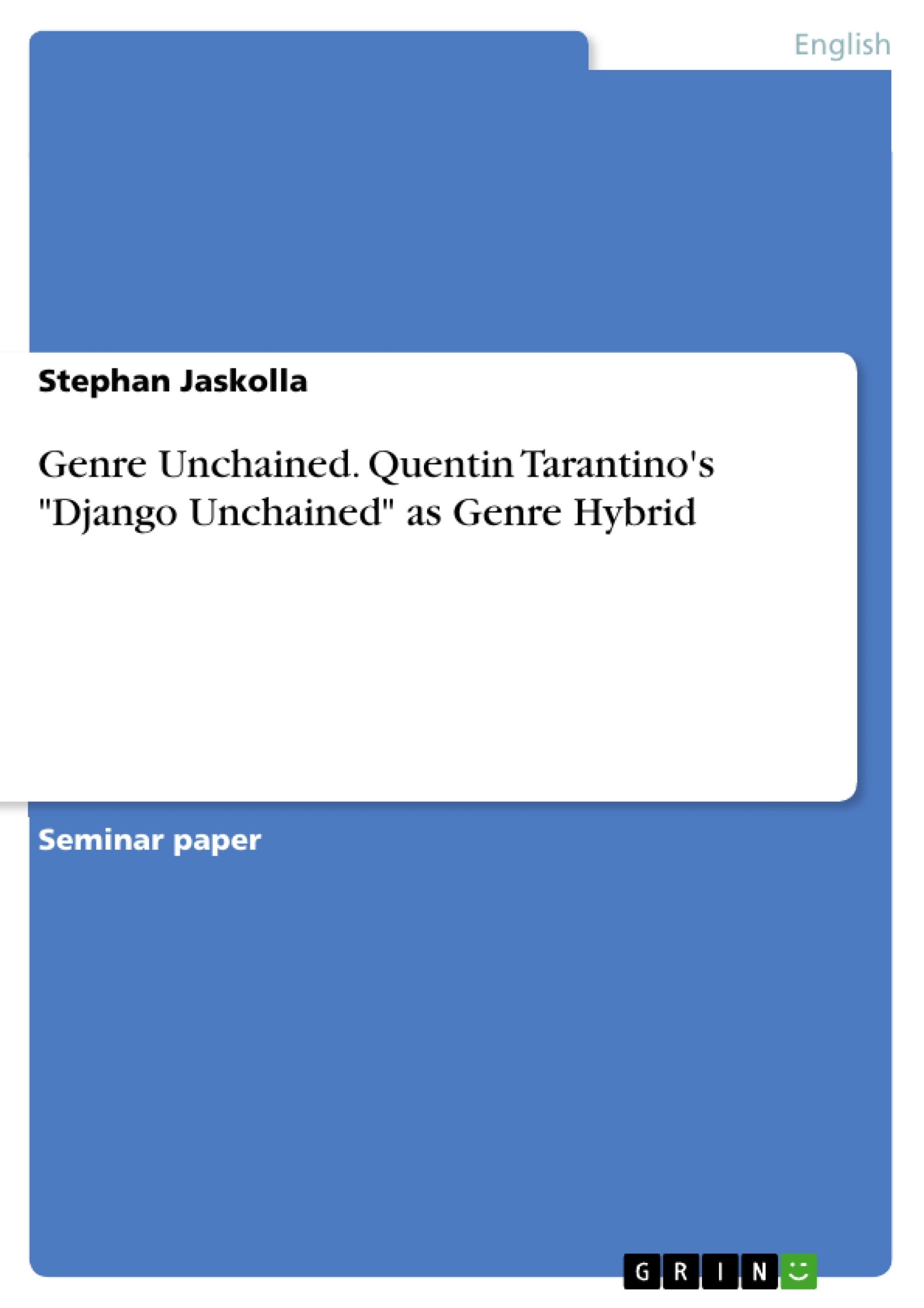In this paper Tarantino’s movie "Django Unchained" will be analyzed in respect of the genres that can be applied to it in order to figure out whether it is a genre hybrid and what effects this hybridity has. Due to the limited scope this term paper will focus on the two genres that have probably been the most controversial ones with regard to this movie, the spaghetti Western and the Blaxploitation Movie, and furthermore touch upon the Buddy Movie genre.
"What kind of film do you want to see?" is a question that often arises before people turn towards a movie,be it in cinema or elsewhere. But what do they mean with "a kind of film"? One could paraphrase this expression with one single word: genre. Genres help people to classify movies and affect their expectations towards the movie they are going to see. Someone watching a "romance" will be expecting something different than somebody watching a "horror film". Furthermore many movies cannot be specified to be of only one genre but show properties of several different genres.
Inhaltsverzeichnis (Table of Contents)
- Introduction
- Genre and Genre Hybrid
- Genre
- Genre Hybridity
- The Genres in Django Unchained
- Defintition of Blaxploitation
- The Blaxploitation Elements in Django Unchained
- Definition of spaghetti Western
- The spaghetti Western elements in Django Unchained
- Definition of Buddy Movie
- The Buddy Movie Genre in Django Unchained
- Conclusion
Zielsetzung und Themenschwerpunkte (Objectives and Key Themes)
The aim of this term paper is to analyze the genres present in Quentin Tarantino's Django Unchained. The paper will explore whether the film is a genre hybrid and the effects this hybridity has on the movie.
- Definition and application of genre and genre hybrid concepts
- Analysis of the Blaxploitation, spaghetti Western, and Buddy Movie genres in Django Unchained
- Examination of the interplay between these genres within the film
- Exploration of the film's cultural context and its relationship to American history
- Discussion of the film's potential influence on the evolution of the genre hybrid
Zusammenfassung der Kapitel (Chapter Summaries)
The introduction establishes the concept of genre and its relevance to film analysis, highlighting the influence of genre on audience expectations. It introduces Django Unchained as a potential genre hybrid and outlines the paper's focus on Blaxploitation, spaghetti Western, and Buddy Movie genres.
Chapter 2 provides definitions for the terms 'genre' and 'genre hybrid'. The definition of 'genre' is explored through the lens of cultural conventions and the role of shared understanding in classifying films.
Chapter 3 begins by defining the Blaxploitation genre, tracing its origins and defining characteristics. It then examines the Blaxploitation elements present in Django Unchained, highlighting how the film embodies the key features of the genre.
Schlüsselwörter (Keywords)
Genre, genre hybridity, Blaxploitation, spaghetti Western, Buddy Movie, Django Unchained, Quentin Tarantino, cultural conventions, film analysis, American history.
- Quote paper
- Stephan Jaskolla (Author), 2014, Genre Unchained. Quentin Tarantino's "Django Unchained" as Genre Hybrid, Munich, GRIN Verlag, https://www.grin.com/document/494928



